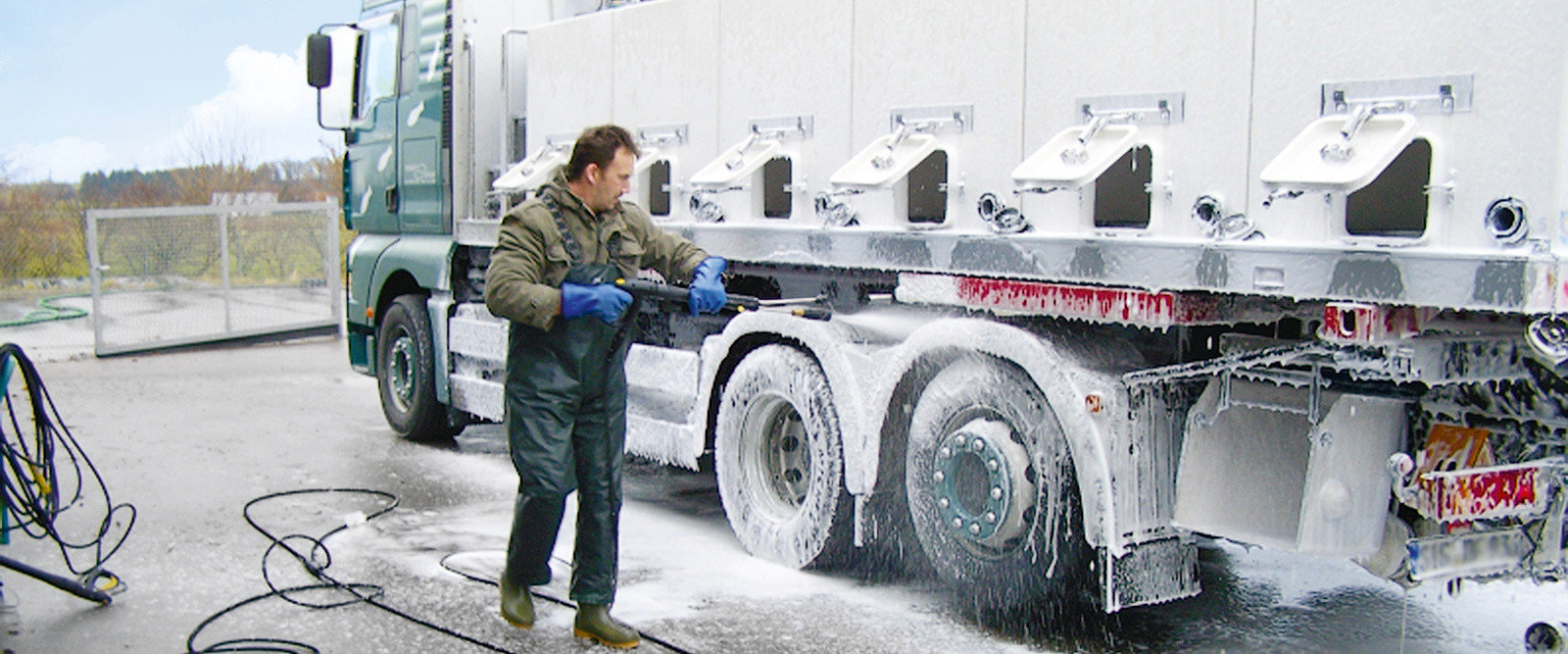Transporting fish - measures for cleaning and hygiene in fish transport
Relocating fish and crustaceans from a hatchery to a tank for rearing and feeding them always involves a risk of introducing germs or infections into their new habitat. To keep this risk to a minimum, thorough cleaning and disinfecting transport containers and vehicles is crucial when transporting fish.

Comprehensive hygiene for transporting fish
In terms of hatchery and the breeding of marine animals, both juveniles and adults will need to be transported from time to time. For example, transporting fish from one tank to the next, or from a hatchery to feeding and breeding tanks, or transporting fish to the net enclosures in open waters, or for further processing. In any of these fish transports, cleaning and disinfection play a crucial role as well as animal welfare requirements for tanks, water quality, and transport duration. These concern the tanks and transport containers themselves. Additionally, cleaning the entire container both on the outside and inside to remove residues from previous transports is advisable. This minimizes the possibility of germs forming and disrupts the possibility for infection so that only healthy animals arrive at their destination.
Transporting fish: Cleaning containers
While fish and shrimp are usually transported in tanks, transferring crabs and lobsters is mainly done using crates and baskets. In both cases, however, transport should be done efficiently and not cause any harm to the animals - and for this, thorough hygiene is required. This starts with how the animals are loaded into the transport containers. A device for the drivers to wash and disinfect their hands during fish transportation is a good idea, as is clothing that is only worn when the animals are loaded and unloaded.
Option 1: Use hot water with high pressure
In order to thoroughly remove dirt and residues from the tanks as well as from baskets and crates after each fish transport, a hot water high-pressure washer is popular in the fishing industry, and is recommended. This is because the water can be heated up to 155 °C - this not only significantly reduces deposits during cleaning, but also germs and any possible biofilm (a slime layer formed by microorganisms). Cleaning agents aren’t normally required either.

Advantages of a hot water high pressure washer
With the addition of hot water, high-pressure washers clean even better at a constant pressure. In addition to better results and faster cleaning and drying times, a measurable reduction in germs can be achieved when using hot water high-pressure washers. With the help of the steam setting, even sensitive surfaces can be cleaned gently at up to 155 °C. Hot water pressure washers make it possible to reduce demands of the work, the time needed, and the quantity of cleaning agents required. Cleaning with hot water pressure washers offers plenty of advantages and possibilities for optimising cleaning in fish transport.
Variant 2: Cold water, a bucket, and foam lance
If, on the other hand, cold water under high pressure is used, it is advisable to use an alkaline cleaning agent to properly dissolve oils, fats or proteins. In this way, no residues are left for that could endanger the well-being of the animals transported afterwards. If cleaning agents are used, a cup foam lance is suitable for an even application. The specially shaped nozzle ensures a fine, stable foam that clearly shows which areas have already been treated. The foam also remains on the surface longer and can therefore act more effectively. Follow this by rinsing with clear water. After cleaning the fish transport containers, disinfecting the transport vehicles with a suitable agent is recommended, as well as the means of transport and equipment. For this to be effective, all containers must be dry. Disinfection is recommended or required depending on national law.
Tip:
Depending on the local legal requirements, cleaning the fish transport containers at a washing station or in a washing hall simplifies the proper disposal of the dirty water.
Transporting fish: Keep vehicles clean
In addition to cleaning the animals‘ transport containers, thoroughly clean the transport vehicles at regular intervals inside and out is important. This applies both to open box vehicles and to tank and container vehicles.
In larger facilities where lots of transport vehicles are cleaned, it may make sense to operate a commercial vehicle cleaning system. An alternative is to install a stationary high-pressure washer at a wash station. The unit can be operated with cold or hot water and can be used by several people simultaneously. Thanks to the individual configuration and the wide range of accessories, the device can be adapted to the user’s needs with ease.
The use of hot water already has the effect of reducing germs. If necessary, disinfectant can also be applied with a high-pressure washer in low-pressure mode to disinfect a fish transport vehicle both inside and out.

Cleaning commercial vehicles
Clean commercial vehicles make a huge contribution to a positive impression of a fleet. To save on labour costs and time, the demands on the quality and speed of the wash are high. The size and nature of the vehicles require special technology for washing. Additionally, the chemical balance of the wash must also be right in order to clean trucks, buses and so on economically.
Tip – Got residual water in transport containers? Remove it efficiently with a wet-and-dry vacuum cleaner
After each transport and emptying the tanks, there may still be some residual water on the floor or in the corners. To remove the water from the tanks, a powerful wet/dry vacuum cleaner works well. It can be used to remove even larger bodies of residual water, too. The vacuum cleaner can be used to remove redisual water in the transport vehicle itself, too.








